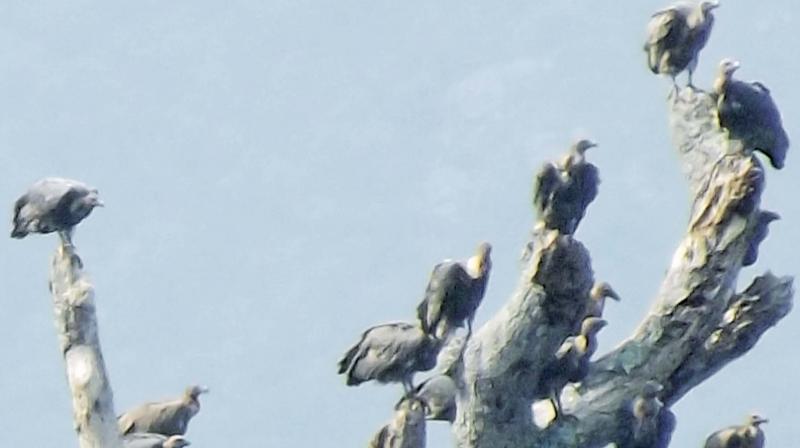Conservation challenges of vultures continue in Nilgiris
The presence of around 300 vultures in the Moyar valley near here has made it the vulture-hub of the state.

OOTY: The first Saturday of September, observed as ‘International Vulture Awareness Day’, reminds mankind about conserving vultures, nature's own disposal squad which help keeps the environs clean. Their population has diminished to alarming levels over the decades due to various eco-toxicological factors.
The presence of around 300 vultures in the Moyar valley near here has made it the vulture-hub of the state, and they have begun to colonize the Ebbanad slopes near Ooty and also in the Thengumarahada jungles in the foothills of the Nilgiris.
Dr.B.Ramakrishnan, Assistant Professor of Wildlife Biology and Zoology (WBZ) at the Government Arts College (GAC) here, who is the principal investigator in a 10 year project on vulture biology in the Moyar valley in the Nilgiris, said that four species of vultures - the White-Rumped Vulture, Long-Billed Vulture, Red-headed Vulture which is commonly called the Asian King Vulture and the Egyptian vulture, all of which are critically endangered species, are found thriving in the Moyar valley. While the entire population of these four species is around 300, the number of White-Rumped Vultures and Long-Billed Vultures are high.
‘Our observations showed that the White-Rumped Vulture and Long-Billed Vulture which are found in good numbers in Siriyur jungle hamlet in the Moyar valley have shifted their colony to Ebbanad jungles and also to Kupparakadavu limits near Siriyoor. The vulture population in Aanaikatti and Jagalikadavu areas in the Moyar valley continues to thrive and this proves that these areas are safe enough to sustain the vulture which is a slow breeder in nature,” he explained.
“Various factors such as the use of the veterinary analgesic Diclofenac are said to be the reasons for the decline in vulture population. Since the vulture feeds on the carcass of livestock and wild animals, the residues of diclofenac found in carcasses is said to affect the renal portal system of the vultures, resulting in their death. Now, this drug has been banned. Conservation challenges continue. What needs to be studied on vulture conservation is on the other ecological factors in the jungle and jungle fringes. What is needed is an area and site specific approach and investigation to bring to light the factors that pose a latent threat to vulture survival,” Dr.Ramakrishnan divulged.
A. Samson, a researcher on vulture breeding biology at WBZ at GAC here, said that human interference in the Siriyoor jungles is found to be the reason for the good vulture population there to shift their base to nearby Ebbanad. ‘The Ebbanad slopes are emerging as a safe habitat for the vulture as it is far away from human settlements and interference,’ he noted.
